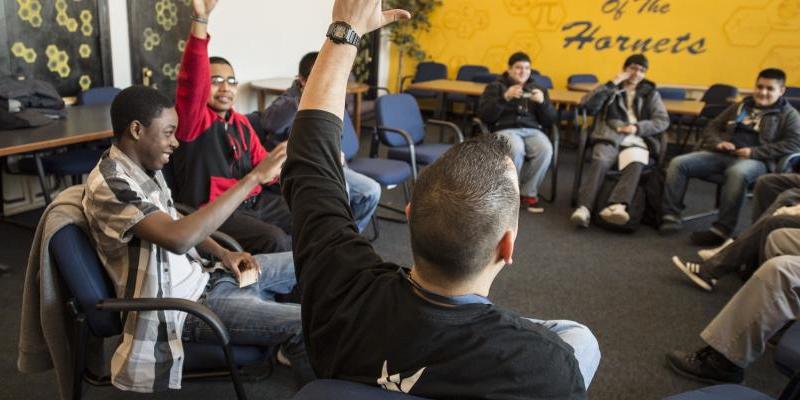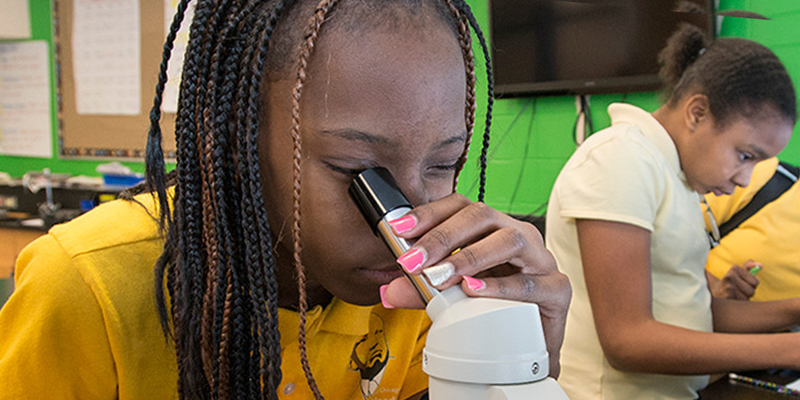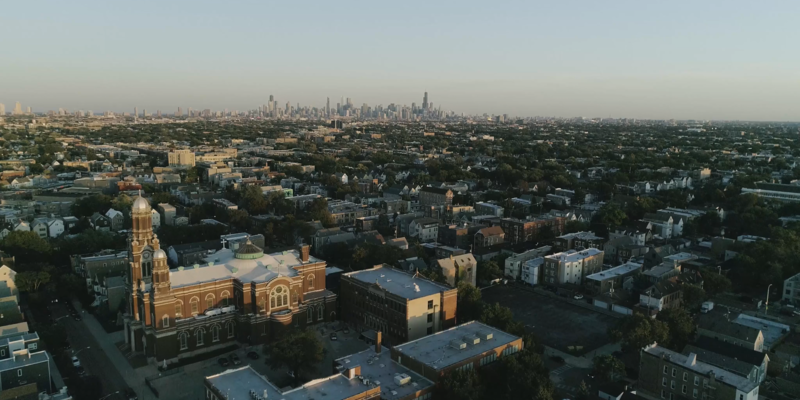Inclusive Economy Lab Developing a Best Fit Framework for Postsecondary Success
Many high school students, regardless of their backgrounds, aspire to earn a college degree and districts have placed a heightened focus on moving students "to and through" college, and yet persistent racial gaps in college completion rates continue to cast a shadow over the education landscape.
Despite the evidence supporting the importance of academic match, Black and Hispanic students enroll and attend their best-match institutions at significantly lower rates than other groups, as noted by Alon & Tienda (2005). This discrepancy results in a glaring gap in college persistence that demands closer scrutiny. It prompts us to question why students, particularly students of color, may choose colleges that are not their best match.
One possible theory that we have sought to test is that more selective institutions often have higher perceived sticker prices that can feel insurmountable, particularly for students of color who are looking to protect their families from financial burdens. In exploring the complexities of this issue, we aim to uncover the barriers that hinder equitable access to education and ultimately strive to pave the way for a future where all students can pursue and complete their college education on equal footing.
In partnership with Chicago Public School’s Office of School Counseling and Postsecondary Advising (OSCPA), the Inclusive Economy Lab has explored the drivers of this high level of undermatch. Early analyses conducted in partnership with CPS suggest that financial considerations significantly limit the colleges students enroll in and attend. This report builds upon this work to comprehensively examine the role academic match, social fit, and affordability play in exacerbating and reinforcing inequitable postsecondary enrollment and outcomes.
To better understand the motivations of students who under matched, the research team drew on both quantitative and qualitative data as follows:
-
An analysis of CPS student records, as well as data from Naviance, the National Student Clearinghouse (NSC), CPS’ Senior Exit Questionnaire (SEQ), the Integrated Postsecondary Education System (IPEDS), the U.S. Census, student financial aid award letters, and an estimation of the net costs of all the colleges students applied to and enrolled in for the class of 2018 (n=27,148).
-
Semi-structured interviews with CPS alumni who attended City Colleges of Chicago (CCC) focused on student background (K-12 education, parent/guardian information, SES); college readiness (course taking, high school support, other resources), college choice/ social fit (what college characteristics were important), and obstacles and financial considerations (EFC from FAFSA, loan options) (n=51).
Drawing from qualitative and quantitative insights, our findings suggest that academic match, social fit, and affordability all figure into students’ decision-making about whether and where to attend college, however, financial considerations and unmet financial need are the most heavily weighted considerations, especially for Black students.
Our research reinforces previous findings in the literature suggesting that college choice continues to matter for getting to and through college. Students who select institutions that are an academic match, a good fit for their interests and identity, and meet the financial needs of their households are more likely to remain enrolled in college two years after they graduate from high school. While all of these factors are important, academic match has the strongest and most consistent relationship with persistence rates, followed by social fit, and net price. Further, the institutions where students are most likely to persist are private, four-year, out-of-state colleges.
Research suggests this is likely because selectivity often signals institutional characteristics that support retention, such as financial aid coverage, smaller student-faculty ratios, smaller class sizes, study abroad opportunities, and strong alumni networks.
Participants in the qualitative component of the study played an instrumental role in helping researchers better understand the college preparation, application, and enrollment process from their unique points of view. While quantitative data allows researchers to get a good sense of what the broader set of students are choosing and the outcomes thereof, our qualitative work completes the picture by allowing our researchers to obtain insights to further explain why the disparities persist across race.
Our mixed methods study led researchers to unveil nine key findingkey findings on the various phases of the college journey, spanning from aspirations to access, enrollment, and persistence. These findings serve as a compass for understanding the barriers, trends, and disparities that influence the educational trajectory of CPS students and provide a basis for informed discussions and targeted interventions.
Click here to read the Executive Summary
Click here to read the FULL report
Click here to listen to our interview with Rufus Williams on the WVON Morning Show
Executive Summary: Developing a Best Fit Framework for Post Secondary Success Developing a Best Fit Framework for Postsecondary Success




